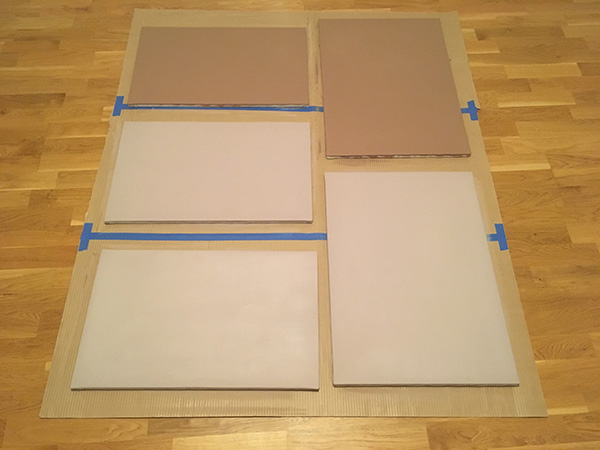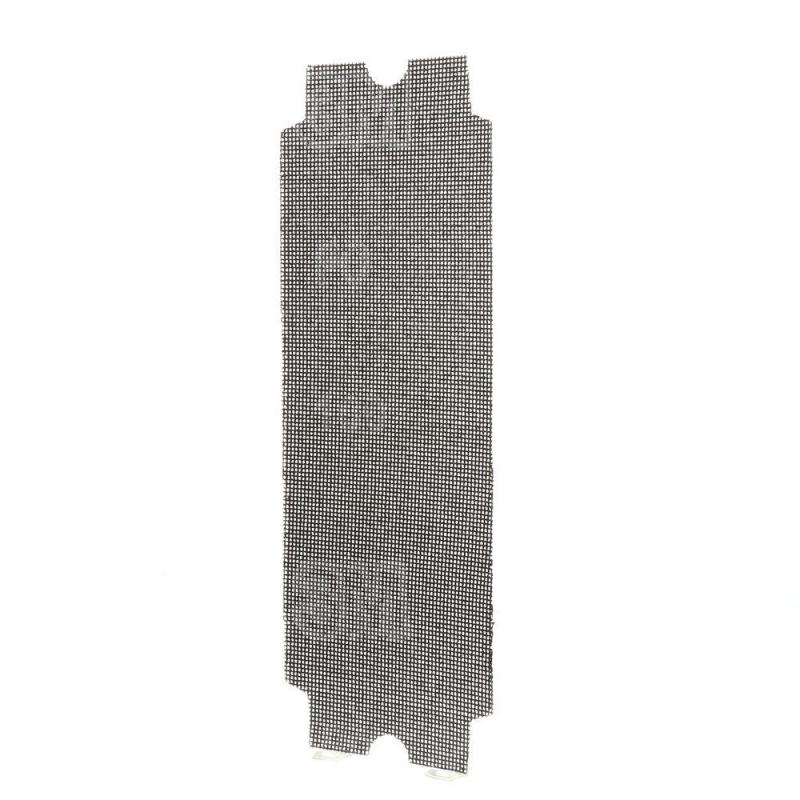Home › Forums › The Learning Center › Studio Tips and Framing › Do you wipe off the dust when sanding in between layers of Gesso?
- This topic has 10 replies, 9 voices, and was last updated 5 years, 7 months ago by
 Riverdusk.
Riverdusk.
-
AuthorPosts
-
February 10, 2017 at 1:51 pm #994835
Hi
I’m preparing some canvases with several coats of gesso and sanding in-between each layer to make the canvas smoother, and a thought popped up in my head.
I’ve been wiping off the dust from sanding with a slightly damp cloth in the thought that I do not want any “dust” to get into the next Gesso layer, but now that I start thinking about it, the dust is Gesso as well, maybe I’m doing something which is completely redundant? Does the dust bind into the next layer like normal Gesso?
I’m waiting about 24h in-between each session of sanding and applying the gesso so I assume the Gesso is fully cured by the time I sand it.
So my question to you guys is, do you wipe off the sanding dust in-between Gesso layers? Does it matter if you do or do not?
And then I wonder, do you sand the final layer? Or leave it un-sanded?
 February 10, 2017 at 2:32 pm #1264772
February 10, 2017 at 2:32 pm #1264772I wipe it clean not for the concern of getting dust into the gesso, just to make sure I get the best adhesion I can. A layer of dust between the surface and a new coat of gesso (or any acrylic or oil paint) is not a good idea. If you work the gesso in thoroughly so all the dust is incorporated into the new liquid layer, then it might not be a big deal but I prefer to start with a pristine surface as the stuff dries so fast that I barely have enough time to get the coat down before it starts thickening up on me.
As for sanding – sometimes no sanding at all, others just the last layer, other times every layer including the last one. It depends on how it looks and the texture I am trying to achieve. If I am going for a really smooth surface I will sand every layer and wet sand the final layer.
One of my current favorites is created using a foam roller, light sanding between coats, 3-4 coats total, last coat is sanded down so the high points are gone bit it still has lots of valleys. Kind of like ground smooth sandstone. It is a really smooth but grabby texture to paint on and has no discernible pattern to it. It doesn’t eat up my brushes like an un-sanded rolled on layer can.
February 11, 2017 at 11:31 pm #1264771I wipe the dust off in between layers too, but I do not sand after the final coat. Some Gesso manufacturers specifically tell you NOT to sand the final coat.
February 12, 2017 at 8:16 am #1264768If you sanded a nice wooden tabletop, would you leave the dust on it before staining or varnishing it? That dust whether wood or gesso is residue that you don’t want.
No need for a poll. Any professional or amateur that I know has the common sense to wipe off the residue . With all due respect.
Website: www.artderek.com
DEMONSTRATIONS:https://www.wetcanvas.com/forums/showthread.php?t=1363787
https://www.wetcanvas.com/forums/showthread.php?t=1343600
https://www.wetcanvas.com/forums/showthread.php?t=1431363February 12, 2017 at 10:19 am #1264773Not a fair analogy for multiple reasons. The dust when sanding wood is small wood particles. Not small “varnish-particles”, if that makes any sense.
The difference with your analogy is that when sanding the gesso the amount of residue I get is not visible to the naked eye. I would not assume that any amateur out there would realize to wipe off the residue if it is not even visible! Only way I can tell there is dust is by looking at the rag after wiping of the canvas. I can understand that it is quite obvious that you do not want large amounts of dust on the surface for most applications, but I think there would also be a tolerance factor meaning that small amounts of dust would not make any sigmificant difference in adhesion compared to a completely clean surface. (And what is a “clean” surface anyway?)
The other part in this which is also not obvious to an amateur is whether or not the dust will dissolve into the next layer of gesso. Gesso is water soluble and I start each layer by dampening the canvas slightly.
February 12, 2017 at 5:50 pm #1264767When I sand between layers of acrylic primer, I “buff off” the remaining dust, by taking it to my back yard, and thoroughly “dusting” it with a paper towel. I don’t concern myself much with the small amount of “dust” that may remain, provided that I’m going to apply another coat of acrylic primer. Like you, I consider it to sorta’ be the same “stuff”.:angel:
HOWEVER, after I sand it for the final time, I take a dampened paper towel, and thoroughly wipe the residual dust off the surface. If a small amount of dust gets into a subsequent application of acrylic primer, I’m not too concerned, but I do NOT want such acrylic dust getting into my oil paint as I begin applying my first oil paint.
wfmartin. My Blog "Creative Realism"...
https://williamfmartin.blogspot.comFebruary 19, 2017 at 4:18 am #1264769Not to hi-jack your thread, but
How long do you wait between layers of gesso?
Dry to the touch?
A couple of hours?
Overnight (twelve hours+)February 22, 2017 at 4:51 pm #1264774The brand I buy states on the bottle that one should wait about 24h between coats. I have sometimes sanded and put down another layer after 3-4h. The final layer (before painting on it) I leave for at least 48h, preferably longer.
March 20, 2017 at 1:01 pm #1264770To wipe or not wipe is a personal preference. Wipe to make sure the surface is pristine for paint or another coat of gesso. Don’t wipe if it adds a texture the artist desires to work upon.
My suggestion is to know why you wipe or don’t wipe and then do or don’t.
Practice religion freely and freedom religiously.
March 28, 2017 at 9:34 am #1264776Thanks for the tips.
August 27, 2018 at 7:18 pm #1264775Not to hi-jack your thread, but
How long do you wait between layers of gesso?
Dry to the touch?
A couple of hours?
Overnight (twelve hours+)I press down hard on the surface – if no paint comes off I lay down the next layer. That can be twenty minutes to 24 hours depending on the weather.
How much sanding depends on how smooth you want the surface to be. BTW instead of sandpaper, I use a sanding screen commonly used on drywall. Way better than sandpaper.

http://s3.amazonaws.com/wetcanvas-hdc/Community/images/18-Sep-2019/1999899-sigsmall.jpg
STUDIOBONGO -
AuthorPosts
- You must be logged in to reply to this topic.
Register For This Site
A password will be e-mailed to you.
Search